
Deer Flies Hunting for a Meal
If you’ve been outdoors working or jogging or horseback riding along tree-lined trails, you’ve probably had the misfortune of …


El inglés es el idioma de control de esta página. En la medida en que haya algún conflicto entre la traducción al inglés y la traducción, el inglés prevalece.
Al hacer clic en el enlace de traducción se activa un servicio de traducción gratuito para convertir la página al español. Al igual que con cualquier traducción por Internet, la conversión no es sensible al contexto y puede que no traduzca el texto en su significado original. NC State Extension no garantiza la exactitud del texto traducido. Por favor, tenga en cuenta que algunas aplicaciones y/o servicios pueden no funcionar como se espera cuando se traducen.
Inglês é o idioma de controle desta página. Na medida que haja algum conflito entre o texto original em Inglês e a tradução, o Inglês prevalece.
Ao clicar no link de tradução, um serviço gratuito de tradução será ativado para converter a página para o Português. Como em qualquer tradução pela internet, a conversão não é sensivel ao contexto e pode não ocorrer a tradução para o significado orginal. O serviço de Extensão da Carolina do Norte (NC State Extension) não garante a exatidão do texto traduzido. Por favor, observe que algumas funções ou serviços podem não funcionar como esperado após a tradução.
English is the controlling language of this page. To the extent there is any conflict between the English text and the translation, English controls.
Clicking on the translation link activates a free translation service to convert the page to Spanish. As with any Internet translation, the conversion is not context-sensitive and may not translate the text to its original meaning. NC State Extension does not guarantee the accuracy of the translated text. Please note that some applications and/or services may not function as expected when translated.
Collapse ▲
If you’ve been outdoors working or jogging or horseback riding along tree-lined trails, you’ve probably had the misfortune of …
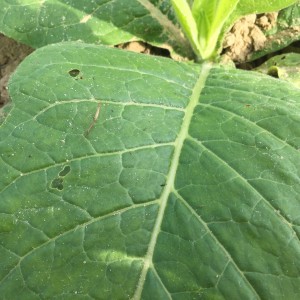
Last week while scouting my plots at Kinston and Rocky Mount, I spotted two predatory insects: big-eyed bugs and …
A recent change to the publishing model for journals produced by the Entomological Society of America has the potential …
I have recently received a few question about organic aphid management in tobacco, specifically about efficacy of different foliar …
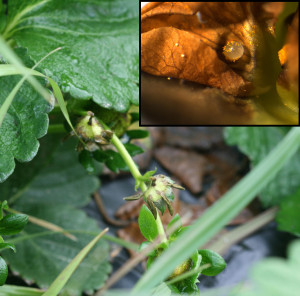
We are seeking strawberry growers willing to let us scout their fields for early season strawberry clipper activity. Graduate student …
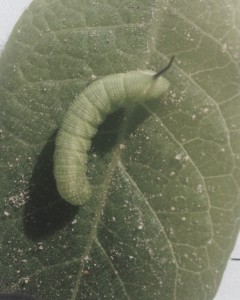
As part of our annual flue-cured tobacco production surveys, we asked county extension agents questions about current insect pest-control …

By Wes Watson, David Orr, and Steve Bambara, Department of Entomology & Plant Pathology, North Carolina State University Introduction. Blister …
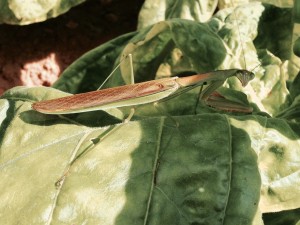
We observed both a decrease in flea beetle populations and an increase in predators this week at our remaining …
Just a short post here to announce the arrival of azalea caterpillars for this year. Azalea caterpillars, Datana major, …
Granulate ambrosia beetles are primary pests of nurseries in spring. However, it seems like every year folks report ambrosia …
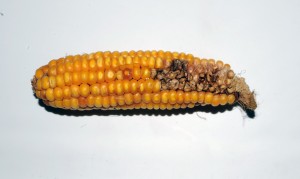
A number of folks are concerned about sap beetle injury this year. Sap beetles are secondary pests. That means …

With harvesting well underway, we are now able to observe how insects distribute themselves on the remaining foliage in the …

We are seeing more flea beetle feeding at sites with the lowest leaves still present on plants and consistently seeing beetles …
Originally posted on ecoipm.org Last week I wrote a post about recent research by Don Cipollini and Chad Rigsby at …
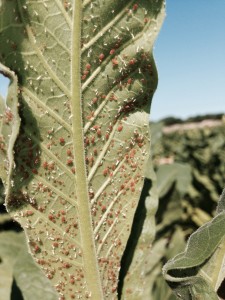
Similar to recent weeks, we are still in a bit of a midsummer lull for pest pressure. However, we still …
Originally posted on ecoipm.org See an update to this story posted here. As reported by Entomology Today, Emerald ash borer, Agrilus …
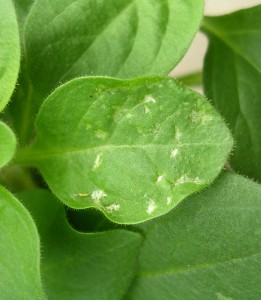
Impatiens necrotic spot virus (INSV) affects ornamental greenhouse crops like impatiens and mums but also many vegetables and herbs. The …
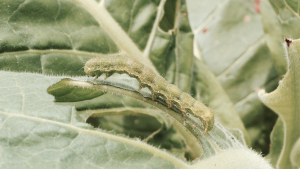
Budworm populations have surpassed threshold at all IPM sites to date, and all but one field has been treated. It …
Maybe you have already found the relatively new (at least to me) Extension Resource Catalog. This is a huge …
Originally posted on ecoIPM.org. Mimosa webworms are active in Raleigh. I saw initial webbing this week. These are annual pests …

Similar to zoysiagrass mites, bermudagrass (Eriophyes cynodoniensis) mites are tiny, worm-like arachnids present in the …

This publication covers the identification, life cycles and treatment of several species of insects, such …

This vegetable pathology factsheet describes the identification and treatment of anthracnose of pepper.

This publication describes the invasive Callery pear species, its offspring, and how it can harm …
This factsheet describes the biology of the cane lace bug or bamboo lace bug, Leptodictya …

This factsheet describes the biology of the banded sphinx moth or lesser vine sphinx, Eumorpha …

This factsheet describes the biology of the elm-grass root aphid, Tetraneura ulmi, and provides residential …

Gummy stem blight is caused by several closely related fungal pathogens in the genus Stagonosporopsis …